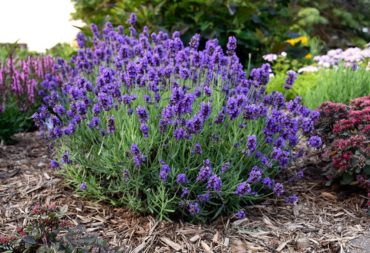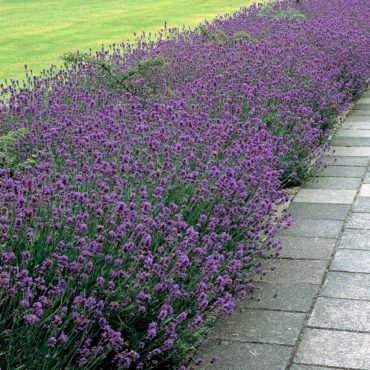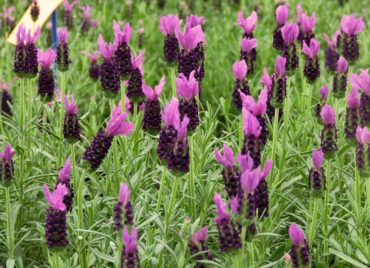
The “lavender lifestyle” is real. Everywhere you look, people are incorporating this multifaceted plant into their daily lives: It’s seen in gardens, as well as in kitchens and décor. It’s even a special part of health and wellness routines. The texture, scent, attractiveness and overall usability of lavender make it one of the most versatile plants you can grow.
Lavender Types
Lavender is a member of the mint family (Lamiaceae) and is found in many regions around the world, especially temperate climates. The most common types are English lavender (L. angustifolia) and Spanish or French lavender (L. stoechas or L. dentata).
English lavender blooms sit on spikes rising tall above a gray-green base of leaves. Both the florets and foliage are heavily scented. The plants flower mostly in pink-purple colors, but some silver-white varieties exist as well.

English lavender is the hardiest in terms of performance. It can grow as high as 3 to 6 feet depending on your region, but most of the top-selling varieties today are dwarf styles, which grow in a more manageable height of 6-24 inches.
Spanish and French lavender are natives to the Mediterranean, where they grow evergreen. Their leaves are longer and gray-green, and the taller flower stems are topped with thicker, pink-purple, pinecone-like flower clusters crowned with similarly colored bracts.
These types are more fragile than English varieties and less winter hardy (USDA Zones 6-9). However, Spanish and French lavender still tolerates a wide range of temperatures.
Ideal Growing Conditions
Lavender grows best in full sun in dry, well-drained soil; it does not like saturated roots. Adding inorganic mulches, such as gravel or sand, could help the soil conditions for a successful lavender bed. All lavender types need little or no additional fertilizer, and it is a good practice to provide air circulation.

In Your Garden
Planting lavender as a front border means you’ll see it up-close. Lavender can also be planted in a mixed patio container with other sun-loving plants, or by itself as a fresh way to scent the air in a small space.
DIY
The flowers and leaves of lavender plants are used in many herbal medicines and self-care regimes. Homemade projects and recipes include herbal teas, culinary spices, essential oils, aromatherapy, balms and more.
Lavender is widely added to bath salts, soaps, soaks, perfumes, etc., for a fresh fragrance and calming effect. As a strong-scented herb, dried lavender florets can also be used to repel pests in the garden, or even in the home closet as a fragrant sachet pillow that can ward off moths.
All of these uses add up to quite a versatile and enjoyable flower that’s become a must-have in gardens and homes around the world. And it’s easy to see how 2020 can be your Year of the Lavender!



























Comments